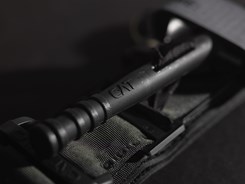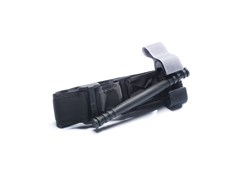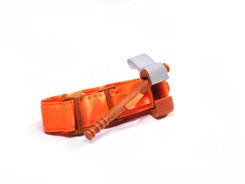With the right tools and the right knowledge, you could save a life
There are many common accidents that can result in major bleeding. Kids crashing through windows at home, when out surfing, fishing and boating accidents, at work or using DIY machinery, road and even hunting accidents.If you come across someone who is bleeding, always call the ambulance
Aussie lives are lost every year simply because people may be unaware of what to do to stop bleeding for long enough to help save a person's life.
We are talking about major bleeding where blood is spurting or pouring from a wound as the heart pumps. In cases such as these, there are several ways to help stop major bleeding. Two ways are by full body weight pressure on the wound, or by applying a tourniquet.
Push hard, don't stop - four essential words to manage a serious bleed
Use a cloth or piece of clothing and push down with your whole body weight on the wound using the palms of your hands - and don't stop, even for a rest, until emergency services arrive.
Push hard, don't stop
These are the two most important steps to take. The two mistakes people make are not applying enough pressure, and not pressing for long enough. Keep pushing and don't stop is what you need to remember.
You can't push too hard
The pushing action compresses blood vessels at the wound site, to stop the flow of blood. It requires your body weight to make this happen.
Information on this website does not replace advice provided by Health Care Professionals or First Aid experts.
References: Pons PT, Jacobs L. Save a life: What everyone should know to stop bleeding after an injury. Chicago, IL: American College of Surgeons; 2016
ANZCOR Guideline 9.1.1 – First Aid for Management of Bleeding resus.org.au/guidelines – Accessed October 2019
The other option is to use a commercial standard tourniquet, such as the Combat Application Tourniquet® (C.A.T). A tourniquet can only be used if the bleed is on an arm or a leg.
The C.A.T is a small and lightweight one-handed tourniquet that stops arterial blood flow to a limb. After the tourniquet has been placed around the limb it works by using a windlass system that tightens a free-moving internal band providing true circumferential pressure. Once tightened, bleeding will cease and the windlass is locked into place. The windlass is then secured using a hook and loop retention strap to maintain pressure until emergency services arrive.


